Kiwi berry is a fruit that grows on vines. The color of the berries is green and the size is similar to the large size of grapes. The taste of these berries is sweet and you can eat them with their skin just like grapes.
Because the skin of these berries is not like fuzzy kiwi fruit. They have smooth and thin skin so there is no need to peel before eating. This plant also adds ornamental beauty to your garden in the late spring by producing white flowers and green foliage.
Due to this beauty, people like to grow fruitless varieties of these plants for ornamental use. As the vines grow vigorously so it is better to provide support to them in the form of trellis. This plant belongs to the Actinidiaceae family.
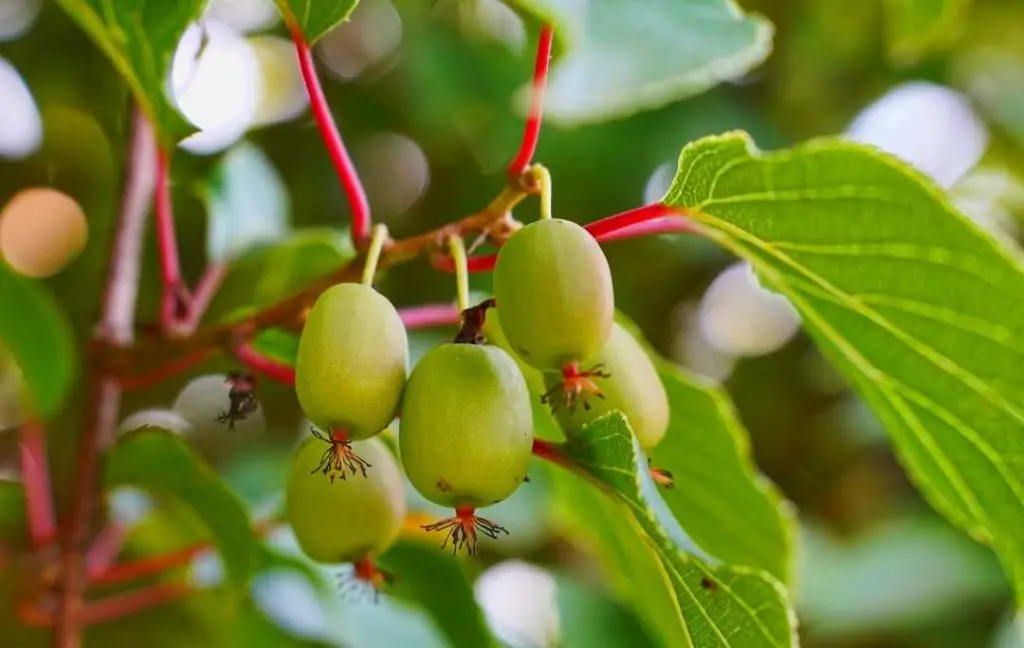
Kiwi vines like to grow in places where they get shade in the afternoon. In forests, the vines of kiwifruits grow in the shade of trees. These trees protect them from strong wind and harsh weather.
WHEN TO PLANT KIWI BERRIES?
Time is the key to success. You should plant kiwi berries at the right time. The best time for planting kiwi berries is Spring after the passing of the last Frost. The best month for sowing the seeds in May.
It is better to install a trellis at the time of sowing seeds or transplanting. From June to early July, you can prune the plant. From July to October, you can harvest your berries.
SOME SPECIES OF KIWI BERRIES
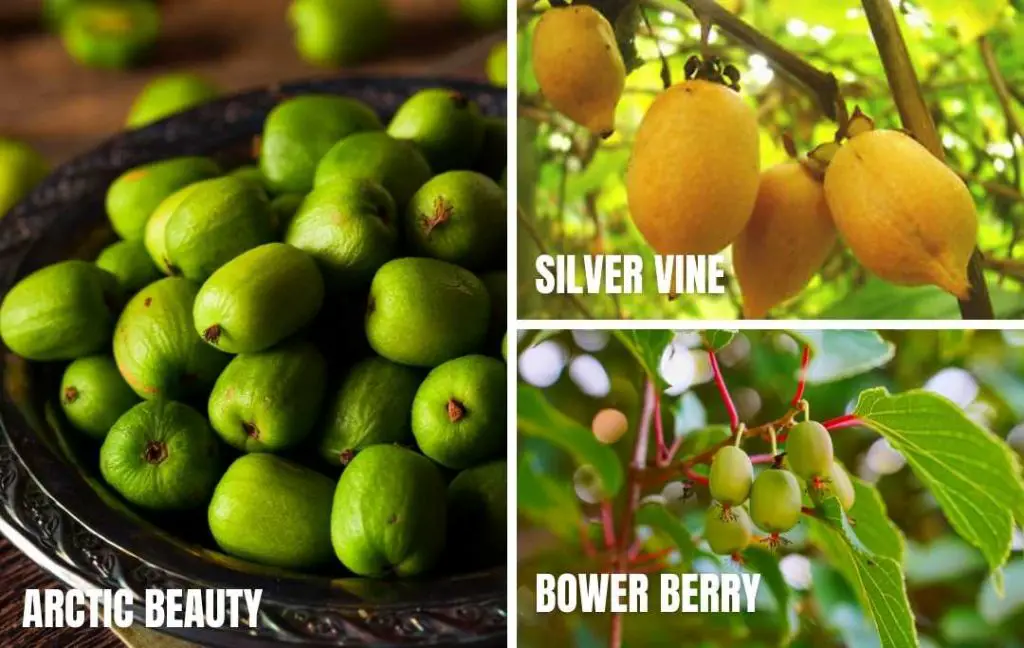
The Kiwi plant is either male or female, the difference between male and female plants is that males supply the pollen while the main function of the female plant is to produce the berries.
You can get a cell fertile female plant for growing but the harvest you get from it is very poor without a male. For getting fruit you need to plant both male and female plants. If you are growing kiwi berries on a large scale then you can plant 6 to 8 female vines while 1 male vine.
It depends upon the climate which variety you choose for growing at your home. Here we are going to describe some common varieties of berries that you can grow at your home.
ARCTIC BEAUTY
This variety has a unique sweet taste. You can harvest these berries from mid-August to mid-September. The size is small from 2 to 8 grams and weighs up to 15 pounds.
This type of berries doesn’t need full Sun. Leave space between plants of kiwi berries about 10 to 20 feet. They grow well if you provide partial shade to them.
BOWER BERRY
This variety has an excellent sweet-tart flavor. You can harvest it from August to September. The size of the berries is about 5 to 20 grams and weighs up to 40 lbs. The space between the plants should be 20 to 30 feet. This variety can’t tolerate winter. It has attractive glossy green leaves.
SILVER VINE
This variety has a spicy flavor. You can harvest it from mid to late September. The size of these berries is very small and their weight can be 3 to 10 grams.
There should be 10 to 20 feet spacing between the plants. Due to the peppery flavor, some don’t like to eat it so we don’t recommend growing this variety at your home for fruit.
HOW TO GERMINATE SEEDS?
Things you need for germinating the seeds are
- Damp paper towel
- Ziplock bag
- Kiwi berries seeds
Here are simple steps of preparing seedlings for growing kiwi berries.
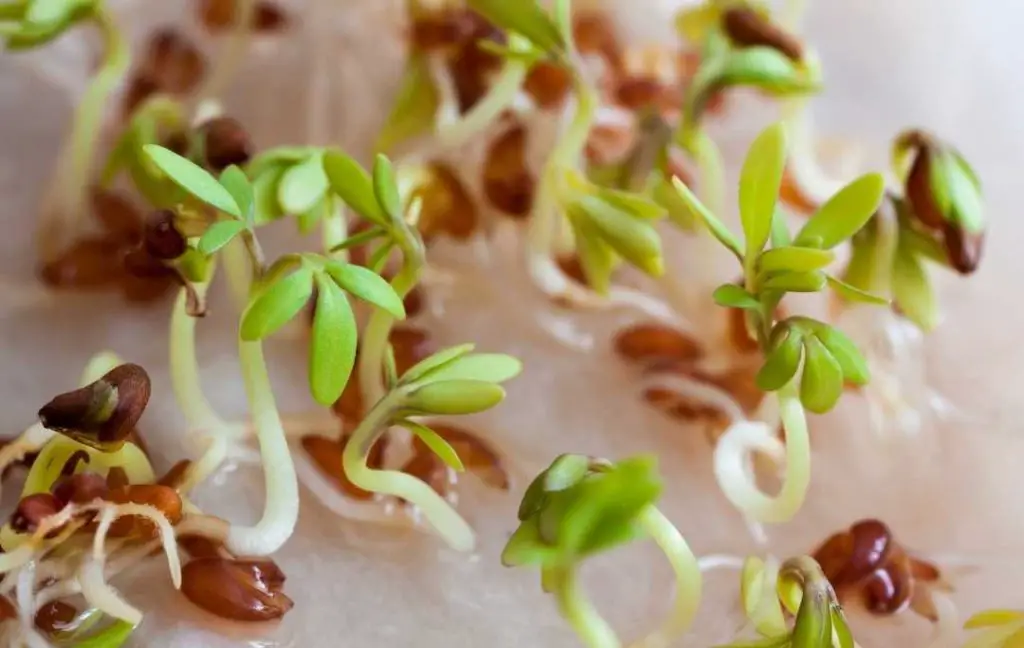
- Try to get high-quality seeds so you will have a higher yield of berries.
- Take the damp paper towel and set the seeds on it.
- Place the paper towel in the ziplock bag. Wait for at least 10 days
- Open the bag, most of the seeds are sprouted and you can transplant them in a small pot.
- Select the seedlings which are strong enough and avoid using thin seedlings.
- Separate each young plant individually. At this step, take off as many paper towels as you can. Make sure the tiny roots of the young plant should not disturb during the transplanting process. The reason for using a paper towel is that the roots of the seedlings will not disturb during the transplanting process.
Fill the pot with a high-quality potting mix. Place these seedlings with paper in the small pot. Grab some soil and bury the paper towels in the pot.
Now the next step is giving quick water to young seedlings so they can easily set in the new environment. You can use a spray bottle for water so they adjust in the soil.
- Now your seedlings need sunlight to grow fast. But keep the plants in a warm and shady location because these plants are very tender.
- After some time your seedlings will grow taller and you can transplant these vines in a location of your garden which you select for them in your garden.
CHOOSING THE SITE FOR YOUR KIWI BERRIES
If you are growing kiwi berries in your garden then choose the site where the vines get shade from afternoon sun and winter sun. The best location for your berries is under the north or east of the tree line or building structure. The recommended locations will contribute to providing cooler and moist soil to the vines.
Choose that location that allows air circulation. In the presence of fresh air, your berries will grow healthier and you will get high production of fruit. Make sure the soil must be well-drained and moist. The pH level of the soil must be between 5.5 to 7.5. Slightly acidic soil is preferred which is rich in organic matter.
TRANSPLANTING
Prepare the area where you want to plant the Kiwi berries.
- Remove the weeds with the help of a garden hoe. Make the soil enriched by adding a layer of compost on the top of the soil. The pH of the soil must be between 5.0 to 6.5.
- Install a trellis to support your vines. It is suggested to install the supporting structure at the time of planting. Dig the holes according to the roots of your plants. The distance between plants must be 10 feet. Water the plants after planting. Keep the soil moist but not soggy.
- If you spread a 4-inch layer of seed-free straw over the soil then it will help to retain the moisture.
Read More
HOW TO CARE YOUR KIWI BERRIES?
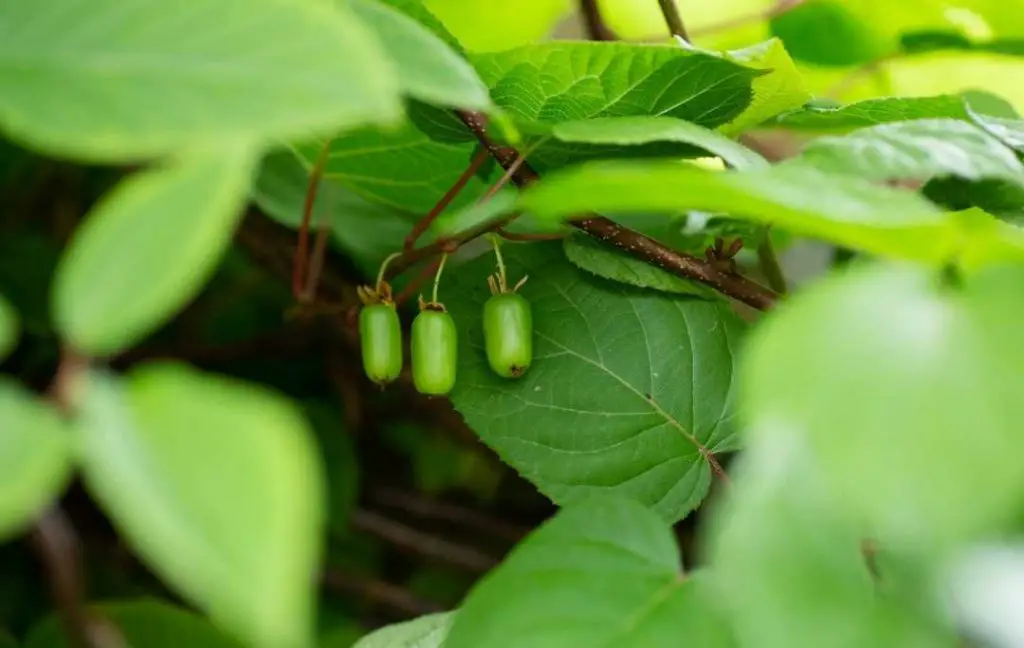
Mulch: A thick layer of mulch helps to retain the moisture in the soil. As is mentioned above moist soil is needed for the growth of berries. Mulch not only retains moisture but also regulates the temperature of the soil.
It helps to control weeds and encourage root growth. You can use wood chips, leaf mulch, or corn stover for this purpose.
Fertilizer: When you see your vine start fruiting then it is time to feed it. When your plants start giving fruit then the organic material in the soil is becoming low.
You can add compost or balanced fertilizer to the soil around the trunk area. Apply fertilizer in Spring and avoid it after July so you can prevent the plants from giving excessive late-season growth. Excessive nitrogen will cause excessive vegetative growth so don’t over-fertilize your plants.
Water: Your plants need more water, especially in the summer. Drought-stressed plants will produce smaller fruits which are not your aim.
Weeds and grass steal nutrients from the soil which is not good for your kiwi fruit vines. Plants will not grow best in the competition for water and nutrients. If you spread the mulch then it will also help you to control the weeds.
INSECTS
There is a rare danger of insects for kiwi fruit vines. But spotted wing drosophila, a kind of fruit fly, will appear when overripe fruit is left on the vine or dropped on the ground.
The best way of protecting your berries is to pick the fruit on time and remove the fruits from the ground. Surround the trunks with fencing so your kiwi vines will be safe from animals and your pets.
DISEASES AND OTHER CHALLENGES
Root rot is a common problem that appears due to poorly drained soil. This is the main disease that affects your kiwi berry vines. Here are some tips to protect your plants from root rot.
- Grow your plants in well-drained soil to protect them from root rot.
- Avoid overwatering so it will damage your berry plant.
- If you grow kiwi berries near black walnuts or victories then these trees will kill your berries.
HARVEST
When you see the berries of kiwi start ripening then it is time to pick all of them.
- Your berries mature for picking in late July but harvesting may extend into late October.
- The ripening of berries will be encouraged by cool night temperatures.
- The immature kiwi berries look glossy, opaque, and hard.
- When you squeeze the ripened berries then they will become dull, translucent, and soft.
STORAGE
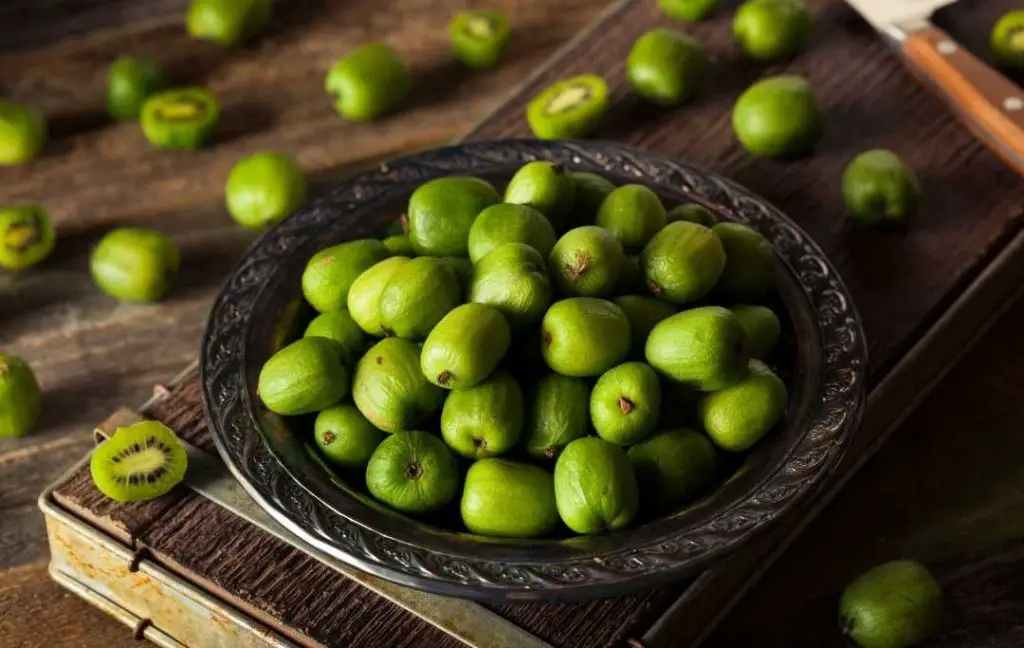
Like kiwi fruit, you can eat berries fresh and they can be stored in a refrigerator. Remember, you can only store them for a week or two in the refrigerator.
If you want to extend the storage time of kiwi berries then follow the following tips:
- The first step is to separate the firm berries from the soft ones.
- Remove all the debris and damage fruit from the firm berries.
- Now keep all the firm berries that you separated in plastic storage bags. These bags are specially designed to absorb fruit ripening ethylene gas and can store your fruit for a long time. You can find this type of special plastic fruit storage bag from any grocery store.
WINTER PROTECTION
In late winter, after the sunset, the temperature cools quickly. This change of temperature will result in the death of the tissues which are found in the bark. This will crack the trunk and finally damage the vines of kiwi plants. This condition is called sunscald injury.
The reasons behind sunscald are as under:
- The thin barks of young vines are the basic reason for getting sunscald. The mature vines have thick and shaggy bark so they don’t need protection from the winter sun.
- If you are growing that variety that has dark-colored bark then it will absorb more heat which becomes the reason for the death of your plant.
WAYS TO PROTECT VINES FROM SUNSCALD
Here are some useful ways for protecting your plants from harsh winters and sunscald.
- You can place a shade barrier on the sides of the vine’s trunk to protect it.
- You can also use plastic spiral wraps, split grow tubes, and tree shelters around the trunk for protection.
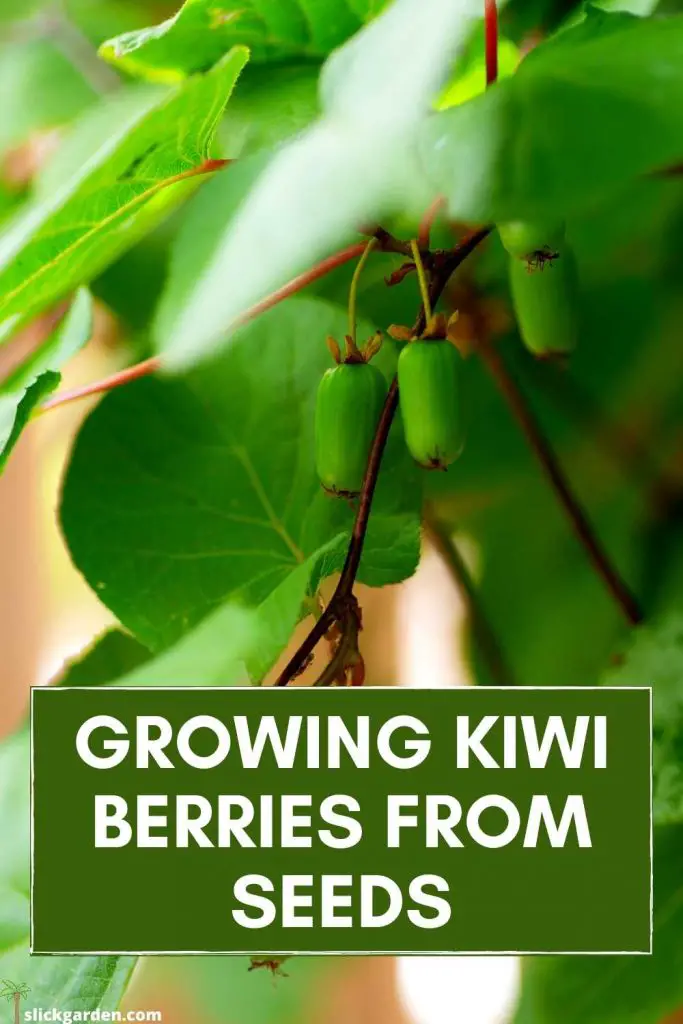
TRELLIS SYSTEM
The vines need structural support for the healthy growth of kiwi berries. When you train the vine on the trellis it twists counterclockwise around the trellis. The support structures make vines grow upward straightly which is not possible without it.
The T-bar trellis system works great if you are growing vines in your home garden but you can also use decorative structures because it will enhance the beauty of your garden.
You can also train the vines on the fence of your garden if it is available. Whatever structure you choose will help in pruning and harvesting.
There are many benefits of trellis such as harvesting becomes easier and you can pick the fruit effortlessly. The plants get proper air and there is less danger of pests and weeds.
Read More
